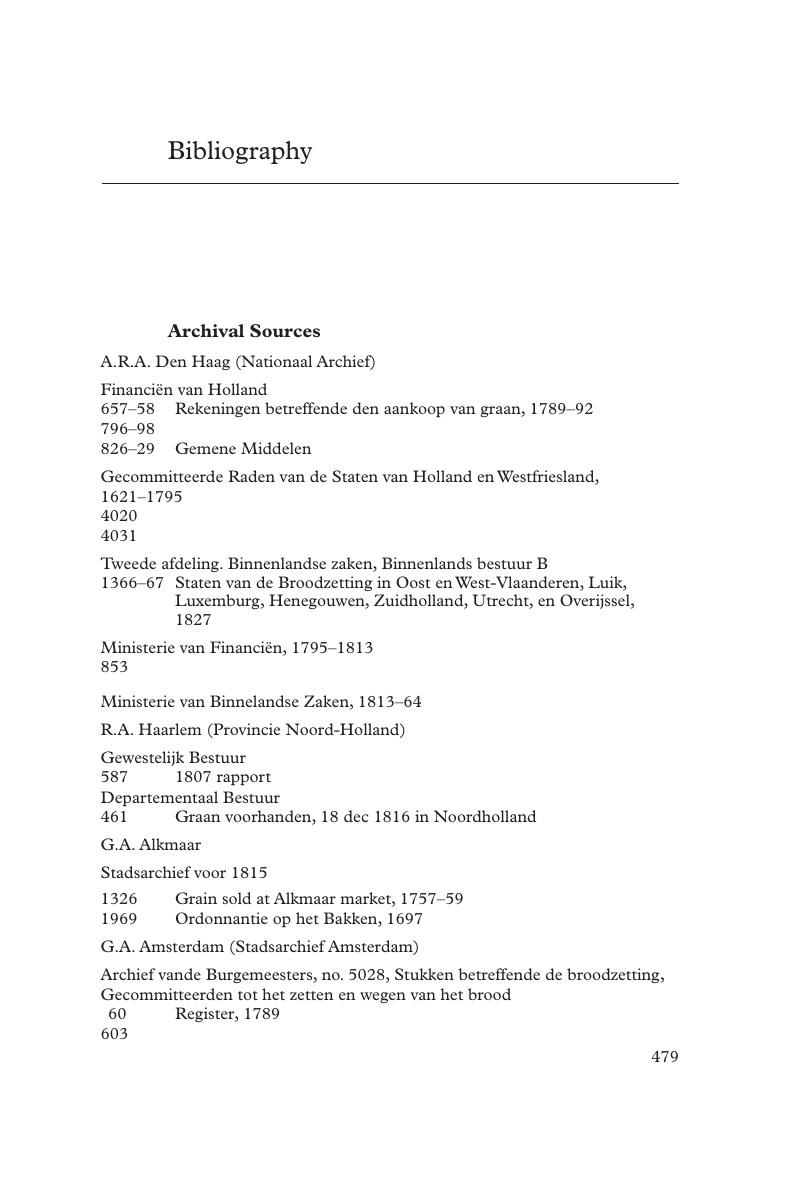Book contents
- The Price of Bread
- Cambridge Studies in Economic History
- The Price of Bread
- Copyright page
- Contents
- Figures
- Maps
- Tables
- Preface
- Note on the Online Database
- Maps
- Introduction
- Part I The Regulatory Regime: Protecting the Consumer and Strengthening the State
- Part II Industrial Organization: The Producers in a Regulated Industry
- Part III Consumer Welfare and Consumer Choice
- Part IV Perspective and Demise
- Conclusion
- Book part
- Bibliography
- Index
- References
Bibliography
Published online by Cambridge University Press: 15 April 2019
- The Price of Bread
- Cambridge Studies in Economic History
- The Price of Bread
- Copyright page
- Contents
- Figures
- Maps
- Tables
- Preface
- Note on the Online Database
- Maps
- Introduction
- Part I The Regulatory Regime: Protecting the Consumer and Strengthening the State
- Part II Industrial Organization: The Producers in a Regulated Industry
- Part III Consumer Welfare and Consumer Choice
- Part IV Perspective and Demise
- Conclusion
- Book part
- Bibliography
- Index
- References
Summary

- Type
- Chapter
- Information
- The Price of BreadRegulating the Market in the Dutch Republic, pp. 479 - 508Publisher: Cambridge University PressPrint publication year: 2019

